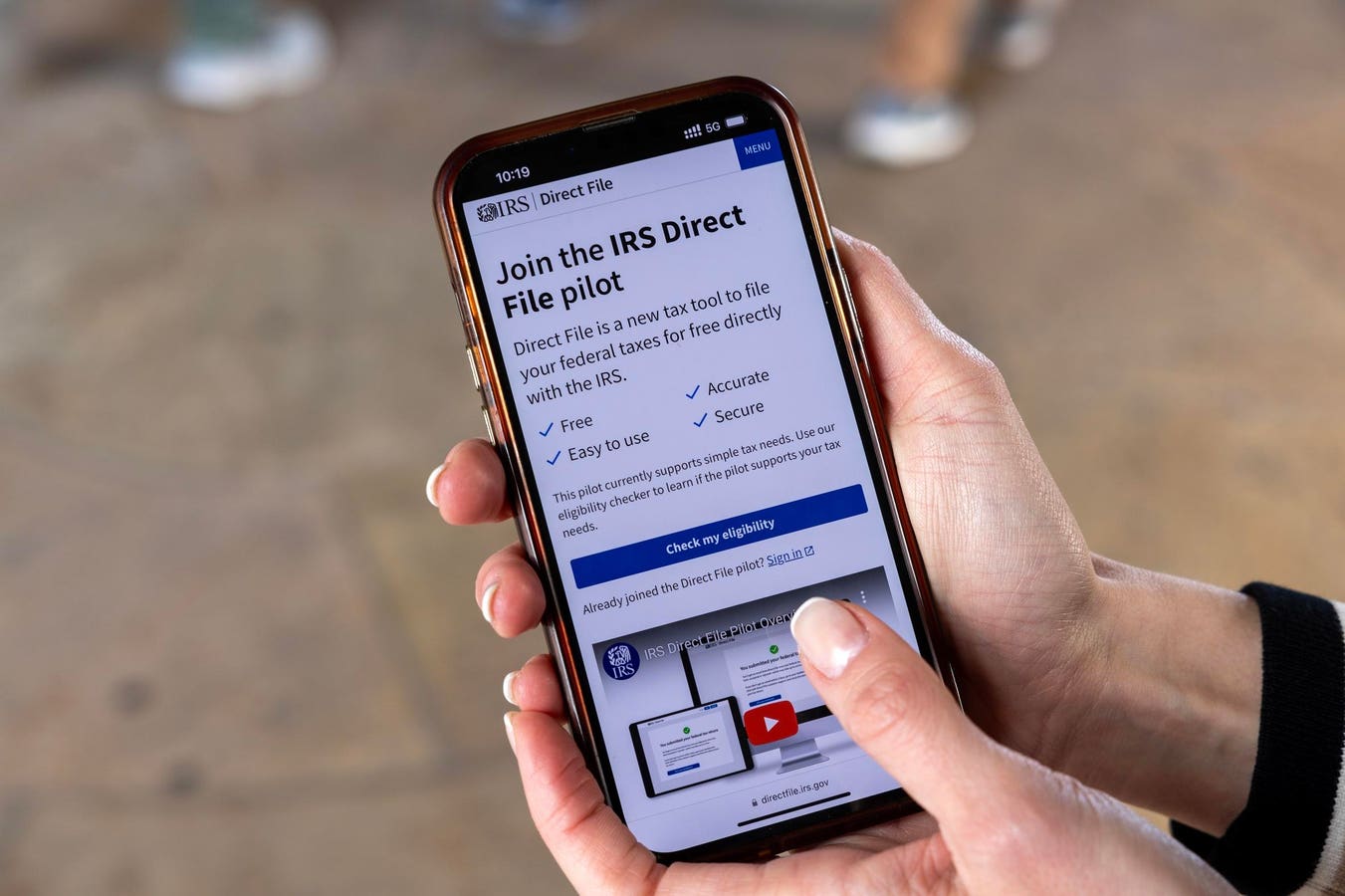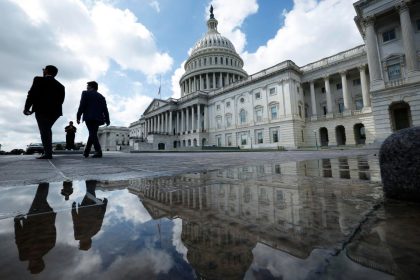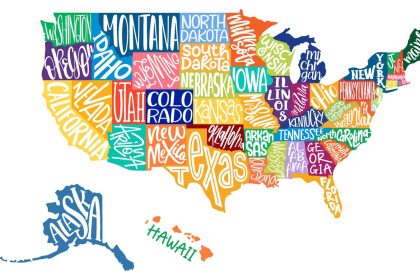The IRS will extend the Free File program through October 2029, following an agreement to continue making free private-sector tax software available to taxpayers. The IRS announced the five-year extension agreement this month.
Free File
IRS Free File is offered as part of a public-private partnership between the IRS and Free File Inc., formerly the Free File Alliance. Through this partnership, tax preparation and filing software providers make their online products available to eligible taxpayers.
Free File debuted in 2003, but not without controversy. It was developed to provide free e-filing services to most taxpayers, with the idea that it could help the IRS meet the 80% e-file target established by the Restructuring and Reform Act of 1998.
At the time, many wondered why the federal government partnered with the private tax prep industry instead of creating its own software. In 2002, Treasury Secretary Paul O’Neill made it clear to then-IRS Commissioner Charles Rossotti that the agency should partner with the private sector. He explained that he didn’t intend “for the IRS to get into the software business, but rather to open a constructive dialogue with those who already have established expertise in this field. In the end, this effort should come up with a better way to save time and money for both taxpayers and the government.” As a result, the government entered into a memorandum of understanding, pledging not to enter the tax return software and e-file services marketplace.
You’d assume taxpayers would flock to e-file for free. The e-file market did explode, but not necessarily for free services, leading to allegations that some providers were directing taxpayers to paid services. In 2019—the last year the Free File agreement was signed—up to 100 million taxpayers, or 70% of filers, were eligible to use Free File. The actual use was closer to 3%.
In 2016, then-Forbes staffer Sam Sharf wrote an account of how, even though she qualified for free filing, it cost her $118.64 to file my 2014 tax return with TurboTax. A few years later, ProPublica wrote a series of articles focusing on the lengths that it claims tax software companies took—like extensive lobbying and hiding free options—to get taxpayers to pay for services. In April of 2019, ProPublica noted that “Intuit
Intuit
Google
Block
The allegations created quite a stir—and resulted in litigation.
Today, tax preparation software companies are prohibited from hiding free filing services from Google or other search results pages. Additionally, if you can’t file for free after visiting a company’s Free File website, you can head back to the Free File website to find another offer. Each IRS Free File company must provide information when you don’t qualify, with a link to the IRS.gov Free File site.
(The 2019 Free File agreement also removed the IRS’ prior promise not to compete against the existing tax prep software—more on that in a moment.)
2024 Tax Filing Season
Since then, traditional Free File participants, like Intuit and H&R Block, have opted out of the program. Eight private-sector Free File partners provide online guided tax software products in 2024:
- Drake (1040.com)
- ezTaxReturn.com
- FileYourTaxes.com
- Online Taxes
- TaxAct
- TaxHawk (FreeTaxUSA)
- TaxSlayer
Notably, only one company, ezTaxReturn.com provided an IRS Free File product in Spanish for the filing season—the lack of tax software in Spanish was a subject we tackled earlier this year.
Details
So how does it work? If you qualify, click over to IRS.gov/freefile to see all Free File options. You can click straight through if you know which software partner you want to use. Otherwise, you can select the “Browse All Trusted Partners” link to use an interview tool to help you find the best product for you—the IRS says it does not save, record, or share your information. After selecting one of the IRS Free File offers, you will leave the IRS.gov website.
(Qualifying taxpayers typically have AGI of $79,000 or less. If your AGI is over $79,000, you can use IRS Free File Fillable Forms, the electronic version of IRS paper forms. Fillable Forms are best for taxpayers who are comfortable using IRS form instructions and publications.)
According to the IRS, in 2024, Free File saw an increase of about 200,000 tax returns, reaching 2.9 million as of May 11. That’s an increase of 7.3% from the 2.7 million filed through the same period last year. The clock is still ticking on the program for 2025. It’s available through the October 15 extension deadline for 2023 tax returns.
(You can only file your current year tax return using IRS Free File. You cannot process a return from a prior year using the IRS Free File.)
“Free File remains an important part of the IRS portfolio to help taxpayers file their taxes for free,” said IRS Commissioner Danny Werfel. “We were pleased to see growth in the program this year, and we look forward to continuing this important collaboration with the tax software industry. Free File was part of a successful filing season at the IRS that saw increased interest in a range of free programs to help taxpayers.”
Direct File
Don’t confuse Free File with Direct File.
While the Free File program allows you to file your tax return for free using software partners, as part of a pilot program in 2024, eligible taxpayers were able to file their federal tax return for free, directly with the IRS, using Direct File.
The pilot was announced in October 2023. The pilot program is now closed (it closed after the filing season ended in April), but the IRS has called it a success, saying that several hundred thousand taxpayers across 12 states signed up for Direct File accounts, and 140,803 taxpayers filed their federal tax returns using the new service. Eligibility was limited to those taxpayers with simple returns.
The IRS began promoting the program in January of 2024, with a more robust push in March.
Even Hollywood got into the act. Hasan Minhaj used to poke fun at TurboTax on his Netflix
Netflix
Taxpayer Experiences
After the filing season, I asked taxpayers to share their experiences using the pilot. Not everyone was willing to talk—not surprising when it comes to taxes, which can be intimidating—but a handful of participants agreed to shared their experiences.
Travis Boyle, an IT worker who lives near Seattle, Washington, opted into the pilot after using TurboTax for more than 20 years. Boyle found out about the program through an article in the Seattle Times and registered to be on the waitlist. It only took the married father of one about 30 minutes to complete his return (he had already started a return in TurboTax, but didn’t submit it pending his experience with Direct File). He found the interface “a little more clunky and sparse than TurboTax” but overall user-friendly, winning him over. Notably, he didn’t have any privacy concerns as he walked through the program, saying, “I’m more likely to trust the IRS with my copy of information they already have than I am with giving Intuit all my personal information for the privilege of transmitting the documentation to the IRS.”
Emma Scalzo, who also lives in Seattle, and works for a non-profit advocating for a more just and equitable tax code in her state, likewise had no concerns about the privacy of her data, caveating, “but I definitely have concerns over private companies like TurboTax using my data.” Filing took her less than an hour, and while Direct File wasn’t as eye-catching as other programs, she found it to be user-friendly, leading her to hope that the IRS expands their service so more taxpayers and financial situations can use the program.
Not everyone was completely sold. Martin Arias, a full-time student who works at the Wine Room in Winter Park, Orlando, relied on his father, Mike, to help him file his taxes. They found the process user-friendly, noting that it only took about one hour to file. But, Arias’ refund was delayed—while it’s not clear that it was related to Direct File, it didn’t make them fans. They would recommend other free options.
Direct File Expansion?
Some organizations are pushing to expand Direct File. Earlier this month, the Coalition for Free and Fair Filing, sent a letter signed by 256 organizations, representing all 50 states, DC, and Puerto Rico, to IRS Commissioner Werfel and Treasury Secretary Janet Yellen, urging the IRS to make Direct File permanent and available nationwide. The letter claimed that “millions of Americans continue to pay billions of dollars to file returns they are supposed to be able to file for free,” noting that the Economic Security Project reported that a broader program could save existing taxpayers $11 billion in filing fees and time savings.
IRS has indicated its willingness to move forward with the Direct File program, but it’s unclear whether there is sufficient support in Congress to make it happen. It wasn’t cheap to get the program started—costing taxpayers $25 million—a move Sen. Mike Crapo (R-Idaho) blasted as “wasteful and duplicative” during a Senate Finance Committee hearing.
Read the full article here





